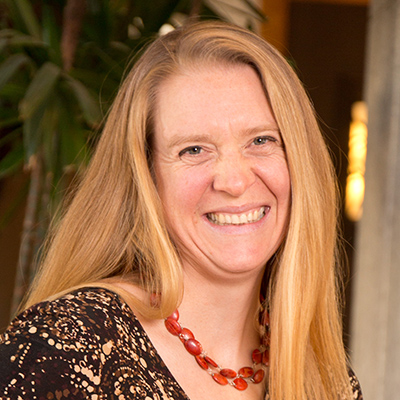
Johanna Neumann
Senior Director, Campaign for 100% Renewable Energy, Environment America Research & Policy Center
A panel of experts explained the benefits of offshore wind and how everyone can help America reach its offshore wind potential.
In an online event attended by more than 100 people, a panel of experts discussed the potential of offshore wind to provide clean, affordable energy to millions of Americans. The webinar, organized by Environment America Research & Policy Center and the New England for Offshore Wind coalition, explained historic progress being made in the deployment of offshore wind and the importance of communicating the benefits of offshore wind to the public and tackling misinformation.
The webinar was organized to build momentum behind offshore wind as data shows the industry has not grown as quickly as expected following the passing of the 2021 Inflation Reduction Act. Of particular concern is the spread of misinformation about offshore wind, often instigated and encouraged by fossil fuel interests.
In her opening comments, Johanna Neumann, senior director of the Campaign for 100% Renewable Energy at Environment America Research & Policy Center explained the role offshore wind can play in reducing America’s dependence on polluting fossil fuels.
Neumann explained that 29 states have offshore wind potential, pointing to data from the National Renewable Energy Laboratory compiled in the report Offshore Wind for America. Neumann also explained that offshore wind is very reliable, a complementary resource to solar power, and located close to population centers, reducing the need for transmission lines.
Offshore wind is abundant, convenient and reliable.Johanna Neumann
Senior Director, Campaign for 100% Renewable Energy
Sabrina Shankman, climate reporter for the Boston Globe, discussed her reporting about offshore wind. Shankman explained that cost increases and supply chain issues, combined with local opposition to transmission lines, have caused problems for the industry, leading in some cases to the delay and cancellation of planned offshore wind projects.
Shankman shared her experiences reporting from Barnstable, Massachusetts where hundreds turned out expressing concern about offshore wind cables coming onshore, with some citing information not grounded in facts. Shankman pointed to research done by Brown University researchers on who’s behind disinformation campaigns around offshore wind and offering factual information to rebut common claims.
Massachusetts has very ambitious climate goals. But the reality is, if the pace of offshore wind development doesn’t rapidly increase, it will be hard to cut emissions in half by the end of the decade.Sabrina Shankman
Climate Reporter, The Boston Globe
Alex Goldstein, founder and CEO of climate communications firm 90 West then shared tips for communicating about offshore wind including finding emotional connection points as well as credible information. He urged attendees to tell stories, know who their audience is and underscored that changing our energy system will be challenging, but that it’s worth doing.
Offshore wind represents a generational opportunity to supercharge the clean energy transition.Alex Goldstein
CEO, 90 West
Goldstein said, “change requires that we bring others along with us, especially those who disagree, and make the case to our friends, neighbors, and elected officials. Clear, authentic messaging about what we are fighting for is just as important as articulating what we’re fighting against if we want to build the public support necessary to keep the clean energy transition moving forward.”
To reach President Joe Biden’s goals of 30GW of offshore wind installed by 2030 and 100% clean electricity by 2035, as well as state goals, will require rapid deployment of offshore wind, alongside other renewable energy sources, this decade.
Kelt Wilska from the New England for Offshore Wind coalition gave encouraging signs that offshore wind might be turning a corner.
Climate change is a big problem, and we need big ideas to solve it. Offshore wind energy fits the bill.Kelt Wilska
Regional Lead, New England for Offshore Wind
Offshore wind is moving forward across America.
On the Atlantic seaboard, the Vineyard Wind and Revolution Wind projects, currently under construction, will power more than 750,000 homes in New England by 2025. The South Fork Wind Farm, also off the coast of New England, began operations in March 2024 as America’s first utility-scale offshore wind farm, powering 70,000 homes in New York. There are additional projects underway off the coast of Virginia.
In the Great Lakes, the Icebreaker Wind project has all its permits but needs a developer to step forward and Pennsylvania lawmakers are considering legislation to help unlock offshore wind potential in Lake Erie.
On the Gulf Coast, BOEM just wrapped up a comment period regarding potential lease sales for offshore wind.
On the west coast, to meet its goal to power up to 5 million households with offshore wind by 2030, California lawmakers are considering directing $1b towards offshore wind in a climate bond. Last year, across the United States, orders for new wind turbines increased by 130%.
At the end of the webinar Alex Goldstein made a pitch for attendees to email their governor to urge them to go big on offshore wind. You can take action below.
Senior Director, Campaign for 100% Renewable Energy, Environment America Research & Policy Center
Johanna directs strategy and staff for Environment America's energy campaigns at the local, state and national level. In her prior positions, she led the campaign to ban smoking in all Maryland workplaces, helped stop the construction of a new nuclear reactor on the shores of the Chesapeake Bay and helped build the support necessary to pass the EmPOWER Maryland Act, which set a goal of reducing the state’s per capita electricity use by 15 percent. She also currently serves on the board of Community Action Works. Johanna lives in Amherst, Massachusetts, with her family, where she enjoys growing dahlias, biking and the occasional game of goaltimate.
